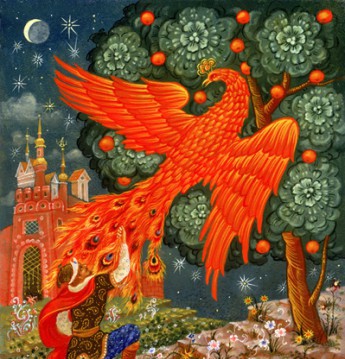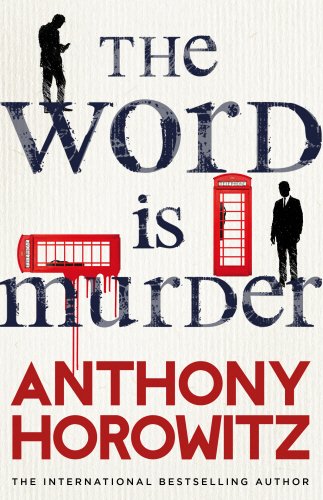 Last Friday, I published my interview with Anthony Horowitz about his brilliant crime novel/metafiction, The Word is Murder. Today I’m interviewing Sulari Gentill about her equally brilliant crime novel/metafiction, Crossing the Lines. Well-known for her popular Rowland Sinclair series of detective mysteries set in the 1930’s, Sulari has broken new ground with this novel. It feels like wonderful serendipity to me, that two such gifted authors should have created these bold new explorations of the writing experience and creative process, within the tight, gripping framework of a great crime story.
Last Friday, I published my interview with Anthony Horowitz about his brilliant crime novel/metafiction, The Word is Murder. Today I’m interviewing Sulari Gentill about her equally brilliant crime novel/metafiction, Crossing the Lines. Well-known for her popular Rowland Sinclair series of detective mysteries set in the 1930’s, Sulari has broken new ground with this novel. It feels like wonderful serendipity to me, that two such gifted authors should have created these bold new explorations of the writing experience and creative process, within the tight, gripping framework of a great crime story.
First of all, Sulari, congratulations on Crossing the Lines, a brilliant and inventive work which works really well both as a gripping crime novel and as highly effective metafiction. How did the idea first come to you?
Thank you, so much Sophie.
This was one those ideas that grew out of idle speculation.
I’ve always allowed myself the indulgence of believing in my characters when it suited me. It makes the act of writing less lonely in a way. I’ve always known that I played close to the line between imagination and delusion. Interestingly, it’s this aspect of my process (if you can call it a process) that I am most asked about at festivals etc. I’ve found myself speaking often about the “the line” between imagination and delusion, confessing to those times I’ve ventured a toe across it. I suspect it’s a game that both writers and readers play to greater and lesser extents.
I do wonder what Rowland Sinclair thinks of me. Does he like me? Would he read my books? Does he find me unnecessarily sadistic? I do, after all, visit all sorts of pain and trouble upon the poor man… and yet I feel he trusts me; that we’re working together. I can help but think about what it would be like to be him, to have the circumstances of my existence controlled by someone else’s narrative.
Of course it’s a writer’s practice to extrapolate, to take things to their natural end, and so I have on occasion found myself pondering what would happen if I crossed the line completely, if I allowed the people I made up to take over, if I permitted them to control my life as much as I do theirs.
And somewhere from the midst these muddled musings came the story of Madeleine and Ned, who write each other and entwine the lines of their stories and their lives.
You use a very interesting and unusual narrative process, by switching back and forth between Madeleine and Edward, sometimes even within the same paragraph, which further blurs the boundaries between them–crosses the lines, in fact!–yet never becomes confusing. How did you go about doing that?
I wanted to echo the way my mind works when I write, the way in which the novel’s voice both merges with and takes over from mine—sometimes in the midst of a sentence or a thought. I wanted to reflect that fluidity but also maintain the individuality of both voices. To be honest, I thought it would be a great deal more difficult that it was. I wrote this novel as I do all my novels, without a plot or plan of any sort and I wasn’t really consciously doing anything in particular.
The novel is written in third person, and the voice tends to change at a point when Maddie and Ned have the same thought or disagree, which is, I think, why the transition is smooth and not confusing. Again, I didn’t do this consciously when I was writing – the changes were instinctive and responsive to the narrative rhythm, but, in hindsight, I see that those pivot points occurred when Ned and Maddie engage directly with each other. For a moment, at these places in the narrative, the reader’s mind is in the head of both Ned and Maddie, allowing them to move seamlessly from one point of view to the other without jarring.
You play with literary concepts and conceits–such as the ‘lines’ between genre fiction and literary fiction–with great deftness, and Crossing the Lines can be seen as a riposte to that artificial boundary-setting. Can you expand a little on that?
My reputation in Australia is primarily as a crime writer. It’s a genre I love and respect, not just because it engages the reader in a tale of peril and intrigue, but also for its ability to hold a mirror up to society, to make social commentary in a way that is subtle and incidental but, for that, no less insightful. The crime novel, at its finest, has many layers; it talks about the worst and best of humanity, about fear and courage, discrimination and justice. And yet there seems to be a line, in this country particularly, that arbitrarily divides genre from literary fiction with the implication that literary fiction is somehow inherently worthy and, conversely, genre is not. To me, the line is an artificial prejudice and whether or not a novel has worth has scant to do with its genre. With Madeleine being a crime writer and Ned a literary novelist, it seemed natural that they would have this conversation.
In the novel, you have mixed aspects of your own lived and literary experience with cameo appearances by other literary figures–such as respected author and director of Writers Victoria Angela Savage–and completely fictional elements to create a disconcerting–and fun!–hybrid narrative. Can you tell us about how you juggled all those different elements?
Whilst her circumstances sound familiar, Madeleine is not me and Crossing the Lines is a novel, not a memoir. In writing this book, I wanted to concentrate on Madeleine’s inner world and so I gave her an outer world that I knew—one that’s very similar to my own. A familiar baseline from which I could extrapolate. It’s not something I’ve ever done before, but for this book which is all about crossing those lines between reality and imagination, it was right.
It also seemed right for a novel about crossing existential lines to allow real people from my own life to play a part in the novel (also not something I’ve really done before). Angela Savage, the character, is Madeleine’s dear friend and trusted colleague—the real Angela is that to me. My old friend and confidant, Leith Henry is cast as both Ned’s and Maddie’s agent. I felt like she anchored the three of our worlds (Ned’s, Maddie’s and mine) together.
To be honest, it felt more like weaving than juggling.
Crossing the Lines is a very different kind of book to your other crime fiction, the very popular Rowland Sinclair detective series, set in 1930’s Sydney. What was the experience of writing it like, compared to those?
In many ways the experience was similar—intense and immersive. But for the first time I was writing without a scaffolding of history, and I was writing a story that was quite internal. It didn’t deal with larger issues of political movements and social justice. Everything in this novel looked in rather than out. I do remember feeling quite lonely when I wrote this book in a way that I’m not when I write Rowland. I suspect it’s because I didn’t have as direct a link to Ned and Maddie as I do Rowland. I am Rowland’s writer, so he speaks to me. Ned and Maddie were each other’s writers—I just eavesdropped on what they said to and felt about each other. I do realise I sound quite mad. Sorry. Sometimes it’s difficult to explain the way my mind works without sounding at least a little insane.
I’ve heard you speak at events where you have said you don’t like to look too closely at your own creative process in case it withers the magic. Yet in Crossing the Lines you have performed another act of magic: incarnating the creative process in the story of Madeleine and Edward. I can imagine it must have felt spooky at times! How did you focus on that aspect of the novel without becoming too self-conscious?
I just tried to be as honest as I could about the experience of writing as I understand it. I think Crossing the Lines works because it doesn’t try to forensically analyse and explain the magic, simply to recreate it. I did get self-conscious once the novel was written…I panicked that it would be read as a memoir rather than a fiction. I even tried to talk Pantera out of wanting to publish it because it made me feel exposed and awkward. I think I might to the only writer ever to tell a publisher, “All right, you can read it if you really insist, but I promise you’ll hate it…” Fortunately, despite my best efforts, I didn’t manage to dissuade them.
While I was actually writing though, self-consciousness was not a problem. I tend to lose myself when I write, I stop being so aware of me. It’s just all about the story. I don’t get embarrassed till later.
How have readers responded to the book?
Pantera tells me CTL is selling much better than they had expected (but I’m not sure what that really means – maybe their expectations were low 😮 ). I’ve had some lovely messages from readers, especially readers who are writers, and it’s received some glowing reviews. It’s doing well on Goodreads, but while some people really love it, there are a few who don’t get it at all (which I did expect – it’s not your standard crime novel) My US Publishers tell me they have very high hopes for this book… but again I’m not really sure what that means. People (including you) whose opinion I have come to really respect, have liked it. So I’m happy. I know that’s really vague but it’s really hard to know as a writer… at this early stage anyway.
Yours is the second new metafiction/crime fiction novel I’ve read this year–Anthony Horowitz’ The Word is Murder is the other–which brilliantly illuminates the creative process in a highly original way. There have been other earlier works which play with those elements, such as French author Guillaume Musso’s La fille de papier (Girl on Paper) and Stephen King’s novella Secret Window, Secret Garden(which was made into the film Secret Window) but though they are gripping mysteries, they both ultimately ‘explain’ the apparent boundary-crossing in a way that disappointed me as a reader(and writer). Not so with your book, and Anthony’s, which stay most satisfyingly within that narrative world. Can you expand on that, and why you decided not to explain?
As a historical fiction writer and a lawyer I’ve learned that what people think happened is as important to consequences as what may actually have happened. To me, what Ned and Madeleine believe is enough. The story is about them, their reality. I didn’t feel the need to rationalise it with any conspiracy or plot or illness etc. The story is purely about the lines that writers may be tempted to cross, and why doing so is both seductive and dangerous.












